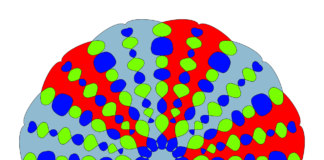The transformative role of AI in community-based health programs is not just a matter of future potential—it’s already reshaping how care is delivered in underserved areas, urban centers, and rural communities around the globe. As health disparities persist and access to care remains uneven, integrating AI in community-based health programs offers promising solutions to bridge gaps, enhance efficiency, and personalize support. Whether it’s predicting outbreaks, improving care coordination, or enabling non-specialist health workers to make data-driven decisions, the power of AI in community-based health programs cannot be overstated. This article explores ten core elements you absolutely shouldn’t overlook when examining the rise of artificial intelligence in grassroots healthcare initiatives.
1. AI Bridges Healthcare Gaps in Underserved Communities
One of the most powerful aspects of AI in community-based health programs is its ability to extend healthcare reach where it’s needed most. Rural populations, low-income urban neighborhoods, and indigenous communities often face barriers to healthcare such as lack of transportation, shortage of medical professionals, and limited clinic hours.
AI tools like mobile diagnostic apps, chatbots, and remote monitoring devices empower community health workers (CHWs) to provide frontline services without needing to escalate every case to hospitals. These tools can analyze symptoms, interpret lab results, and even suggest next steps in patient care. In essence, AI turns a smartphone or tablet into a virtual clinician’s assistant.
By automating triage processes and streamlining information flow, AI ensures that limited resources are deployed where they are needed most. This democratizes access to care, allowing even remote villages to benefit from medical expertise—sometimes without a doctor ever setting foot there.
2. Predictive Analytics for Community-Level Outbreaks
Public health experts have long known that early detection saves lives, particularly when it comes to infectious disease outbreaks. AI’s role in disease surveillance is invaluable, especially in densely populated or resource-scarce regions.
AI in community-based health programs can ingest and analyze diverse data sources: weather patterns, population movement, sanitation reports, and anonymized mobile health data. Machine learning models can flag anomalies—such as sudden spikes in flu symptoms or gastrointestinal issues—that might indicate an emerging outbreak.
Such predictive capabilities allow health authorities to deploy mobile clinics, distribute medications, and raise awareness before full-blown epidemics occur. During the COVID-19 pandemic, similar AI applications helped identify transmission hotspots and allocate resources to vulnerable groups. The lesson? When paired with human insight, AI can be a frontline ally in safeguarding public health.
3. Empowering Community Health Workers Through AI Tools
Community health workers are the backbone of many grassroots health initiatives, particularly in developing nations. But they often lack advanced training or real-time medical guidance. AI tools are rapidly changing this dynamic.
By equipping CHWs with AI-powered mobile platforms, they can access symptom checkers, treatment guidelines, and voice-activated diagnostics even in remote areas. These platforms use natural language processing (NLP) to communicate in local dialects, increasing usability and trust.
One notable example is the use of AI chatbots in sub-Saharan Africa that walk health workers through maternal health screenings. These digital tools not only guide decisions but also record data for future use, turning each visit into a source of insight for the broader health ecosystem.
4. AI Enhances Health Education and Behavioral Change Campaigns
Education remains one of the most cost-effective public health interventions, but traditional methods often fall short in terms of engagement and personalization. AI enables dynamic, context-aware health education programs tailored to individual community needs.
AI in community-based health programs powers voice assistants, interactive videos, and gamified learning tools that teach people about hygiene, nutrition, family planning, and chronic disease management. These tools adapt to literacy levels, languages, and cultural norms, increasing their impact.
For example, an AI-driven mobile platform might use voice prompts to remind pregnant women about prenatal checkups or send personalized nutrition tips to parents based on a child’s health records. This hyper-personalized education drives better adherence and promotes long-term behavior change—essential for tackling preventable diseases.
5. Streamlining Resource Allocation and Logistics
One of the challenges in community health delivery is ensuring that the right resources—vaccines, medications, medical devices—are available when and where they are needed. AI helps optimize this logistical puzzle.
AI systems can analyze past usage data, population density, transportation routes, and seasonal patterns to forecast demand for healthcare supplies. For instance, if an algorithm predicts a rise in malaria cases during rainy months, it can alert authorities to stock up on mosquito nets and antimalarial drugs in advance.
In India and Kenya, drone networks powered by AI planning tools have been used to deliver vaccines and blood supplies to rural clinics. These AI models continually refine flight paths, delivery times, and payload optimization to ensure maximum impact with minimal waste.
6. Supporting Mental Health in Local Communities
Mental health is often neglected in public health programming, especially in community-based settings. The stigma surrounding mental illness, coupled with a scarcity of trained psychologists, creates a care vacuum. AI can fill part of this gap.
AI-driven mental health chatbots offer 24/7 support for individuals dealing with depression, anxiety, or trauma. These tools use NLP to understand users’ concerns and respond empathetically with evidence-based advice or exercises. More importantly, they provide a nonjudgmental, confidential space that users may not find in their communities.
These platforms also collect anonymized data to detect patterns—such as seasonal spikes in suicidal ideation—helping community leaders and NGOs shape timely mental health campaigns.
7. Ensuring Cultural Competence and Local Relevance
One of the greatest risks in deploying AI in community-based health programs is the potential mismatch between algorithm design and cultural context. An AI system trained on Western health data might not perform well in African, Asian, or Indigenous populations unless localized.
Fortunately, advances in AI model customization now allow for the inclusion of local languages, health beliefs, and social norms. Some initiatives even involve communities in co-creating datasets, ensuring that AI tools respect and reflect their unique contexts.
AI systems that understand the difference between urban and tribal medical norms—or can distinguish between symptoms of common illnesses in tropical climates—are more effective and gain community trust more rapidly.
8. Strengthening Data-Driven Policy and Program Evaluation
AI doesn’t just enhance delivery; it also strengthens governance. One of the persistent problems in evaluating community health programs is the difficulty in collecting, organizing, and interpreting scattered data from various sources.
AI tools consolidate and analyze this information in real-time, offering insights into program effectiveness, service utilization, and population health trends. These analytics help governments and NGOs make evidence-based decisions: which interventions to scale, where to deploy funding, or which populations require urgent attention.
For instance, dashboards powered by AI analytics can flag declining vaccination rates in specific districts or highlight disparities in maternal care access. This creates a feedback loop where data drives smarter decisions and more accountable leadership.
9. Overcoming Language and Literacy Barriers
Literacy and language barriers are major impediments to effective health communication in many parts of the world. Here again, AI in community-based health programs proves invaluable.
Speech recognition and text-to-speech technologies enable apps to function in oral languages or dialects that may not be written. AI translation engines are now smart enough to interpret colloquial speech, idioms, and even tone—ensuring that health messages are not just delivered, but understood.
For example, a mobile maternal health tool in rural Bangladesh might speak directly to expectant mothers in Bengali or Sylheti, guiding them through checklists, appointment reminders, and nutrition advice. This removes dependency on reading skills and increases engagement.
10. Navigating Ethics, Privacy, and Data Security
As promising as AI is, it’s essential to address its ethical implications—especially in vulnerable communities. Data collected from community health programs is often highly sensitive, containing information about sexual health, disease status, or mental health conditions.
Ensuring this data is encrypted, anonymized, and ethically governed is non-negotiable. AI tools must comply with national and international data protection standards, and communities must be informed about how their data is used.
Moreover, decisions made by AI—such as recommending treatment or denying access to services—must always be reviewable by human professionals to prevent bias or errors. Creating “explainable AI” models that users can understand and challenge helps ensure fairness and transparency.
Conclusion
As the healthcare landscape continues to evolve, the role of AI in community-based health programs becomes increasingly central. From improving access and diagnostics to enabling more effective health education, mental health support, and resource distribution, AI is proving to be a powerful ally in advancing public health at the grassroots level.
Still, the success of AI depends on more than just technical prowess. It requires cultural sensitivity, ethical integrity, community involvement, and continuous learning. When implemented thoughtfully and inclusively, AI in community-based health programs can do more than digitize old practices—it can reimagine how care is delivered, making it smarter, fairer, and more human-centered.
As you explore the intersection of technology and community health, remember these ten core insights. Each represents not only an opportunity but a responsibility to harness AI’s potential in a way that uplifts, empowers, and heals entire communities.














